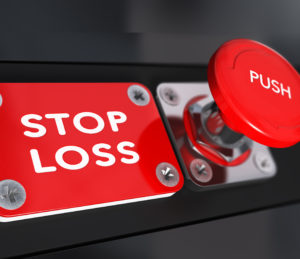October 12, 2016
As we know, most investors do not really perceive risk in portfolios as symmetrical. A scientific approach would state the risk of a portfolio in terms of volatility – the likelihood that actual returns may deviate from expectation, and the potential scale of that difference. That measure works in both directions, up and down, so a portfolio delivering a performance 20% higher than expected for a given period will be categorised as high risk – the kind of risk a client is delighted to accept. But if the portfolio had an expected return of 5% and came out 20% lower, the client would be unhappy about basically the same level of risk.
Therefore various techniques have been developed over the years to respond in an asymmetrical way whenever a portfolio’s performance deviates too much on the downside. Best-known – and familiar to our clients – are so-called stop-loss limits that trigger the sale of certain assets once their negative performance over a specific period reaches pre-established thresholds.
This approach gives investors a feeling of security, since they know they will never lose much more than the predetermined maximum drawdown that triggers the stop-loss sale of the risky asset. This perceived safety net can therefore help convince traditional fixed-income investors, especially in today’s negative yield environment, to consider broadening their horizons and accepting a little more (equity) risk in their portfolios.

Does that approach actually work in times of crisis?
It certainly has worked on a couple of occasions in the not so distant past. Take an investment in the Euro Stoxx 50 Index with a predetermined stop-loss level of 15%. Since the turn of the century, there have been two clear occasions where a lot of damage would have been avoided by selling up after a 15% drawdown: in the 2000-01 dot-com bubble crash and the 2008-09 subprime-induced financial crisis. During both periods the Euro Stoxx 50 dropped massively, by 66% and 61% respectively. In these scenarios taking a 15% hit and quitting would have been preferable to hanging on until the market turned.
But since then stock markets seem to have fundamentally changed, with no fewer than seven “mini-crises” since 2009 in which markets have fallen by more than 15%: 19% in 2010, 37% in 2011, 21% in 2012, 16% in 2014, 22% in 2015, and 24% and then 16% this year. Pulling out of the market after every 15% drop would have caused a series of 15% losses rather than a protected return, even though over this period as a whole the market did not lose money.
The biggest problem is the same in both cases: how do you time market re-entry? Starting to reinvest partially straightaway after a stop-loss is a bit of a nonsense: you might as well stay in if you expect a rebound. But waiting for a fixed period of time, such as 12 months, before re-entering the market would not have helped even in the longer crises of 2000-01 and 2008-09, both occasions when the 15% stop-loss would have been triggered a second time. And since then most re-entries would have put you back in the market just in time for the next mini-crisis.
The conclusion: stop-losses are not the perfect answer to all market volatility issues. They may give a secure feeling, and they will avoid the worst in a really massive downturn, but there is a big likelihood of losing out on performance over the long run by quitting the markets too often, as has been the case over the past seven years. Better portfolio diversification, even outside the traditional equities and cash/bonds mix, might prove better at keeping price swings within your comfort zone and avoiding being hit by the “saloon doors” of the next downturn swinging back at you.
Ruben De Roover
OneLife Investment Relationship Manager![]() https://lu.linkedin.com/in/ruben-de-roover
https://lu.linkedin.com/in/ruben-de-roover
>>> For more information on the underlying assets available within our life assurance contracts, please contact our Investment specialists here.
>>> This article is part of the September 2016 edition of our monthly newsletter Life Insights. Click below to subscribe.
Copyright picture: Stop Loss, Trading (credit: Istock)
